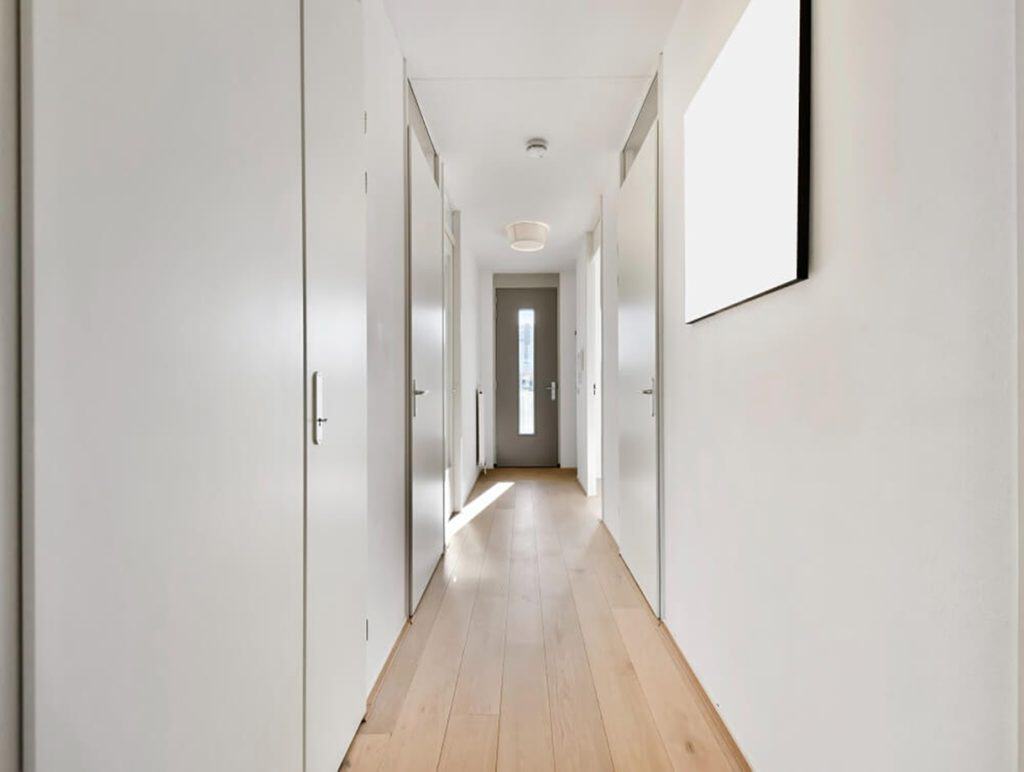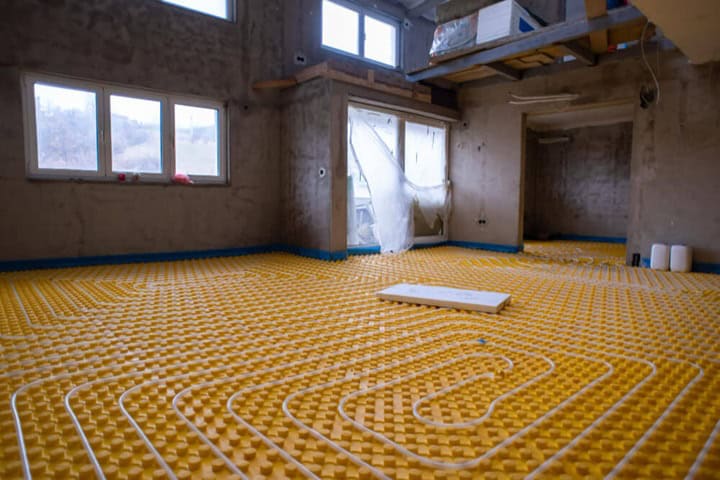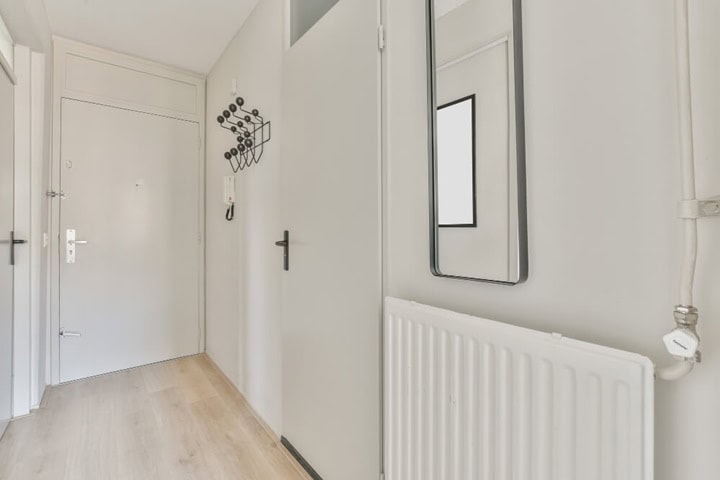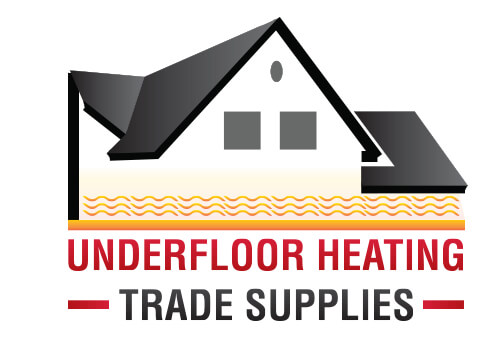
Ever wondered why your hallway feels cold, even when the rest of your home is comfortably warm? We have the answers as to why this is…
Hallways are notorious for being difficult to heat properly, and yet they are a necessity in contemporary homes since it is often one of the first places in which guests will be welcomed into your home. In this article, we will answer the age-old question “why is my hallway so cold,” as well as looking at efficient ways to heat your hallway, from traditional radiators to underfloor heating systems, ensuring every entrance to your home is warm and inviting.
Key Points:
- Understanding the unique heating challenges hallways can pose
- Key factors in choosing the right heating solution
- The benefits of underfloor heating and radiators
- Smart heating technologies to improve your hallway comfort
Why is Your Hallway So Cold?
Ever stopped to wonder, “Why is my hallway so cold?” The answer, unsurprisingly, actually lies in your hallway’s unique layout and how often it is used. Hallways serve as the middle point of your home, as it will likely be used by everyone entering or leaving and moving from one room to another throughout the day.
It’s also where outdoor gear gets dropped off and daily traffic takes its toll on carpets and floors, such as coats and shoes. But beyond the wear and tear, the hallway’s design itself can make it more challenging to keep warm.
Why Is A Hallway Difficult To Heat Up?
Hallways often connect multiple rooms within your home, and each room will likely differ in temperature and air circulation. For example, your living room or lounge will be warmer than your kitchen due to residents being stationary in the lounge for longer, requiring greater heating times compared to a kitchen, which will have different flooring as well as boilers and ovens included.
This layout can create uneven heating, with certain areas remaining chilly despite your best efforts to heat them. For instance, a standard hallway leading from the ground floor to upper levels might span a considerable vertical space, which can significantly increase the volume of air to heat compared to a single room.
This difference in air volume means that a radiator in your hallway needs to work harder and be more efficient to warm the space adequately. However, heat naturally rises, and in a multi-level home, much of the warmth generated on the ground floor may end up on the upper floors, leaving your hallway colder than you’d like. Even if you’ve recently installed a new radiator model, this doesn’t necessarily mean that it will heat your hallway properly.
How To Heat Your Hallway Correctly
Before we look at the best heating systems for your hallway, it’s crucial to naturally improve the heat retention within the space as much as possible.
Addressing drafts and ensuring your hallway is as air-tight as possible can dramatically improve warmth in your hallway. Weather-stripping doors and windows and sealing any gaps that allow heat to escape are essential first steps. Often, the hallway radiator might seem sufficient, but poor insulation and unnoticed gaps can undermine its effectiveness.
Loft insulation also plays a critical role, too, especially if your hallway extends to a higher landing. Many homes have outdated or inadequate loft insulation, which can be a significant factor in why your hallway feels so cold.
Checking, upgrading, or replacing your loft insulation to meet modern standards not only helps maintain a consistent temperature but can also reduce heating costs significantly.
Insulation Depth
For older properties, it’s not uncommon to find loft insulation that is woefully thin by today’s standards. Insulation should ideally be around 270mm deep to be effective. If yours is less than 100mm, it’s time for an upgrade.
Modern insulation products are available in 100mm and 170mm depths, which can be layered to achieve the recommended thickness. Upgrading your insulation not only improves warmth but also lessens your environmental impact, making it a smart and eco-friendly home improvement.
Assessing Your Heating Needs
Once you’ve tackled your loft insulation, evaluating the heating capacity needed for your hallway is the next step. This involves considering the British Thermal Unit (BTU) output required to adequately heat the space. Hallways, which are often narrow, might not be well-suited with a bulky, oversized radiator that dominates the space. Instead, a tall, vertical radiator can be a stylish and space-efficient alternative.
Heating Options For Your Hallway
The question, “Why is my hallway so cold?” often leads homeowners to reconsider their current heating solutions.
Underfloor Heating

While traditional radiators have been the go-to, alternative heating options like underfloor heating are becoming increasingly popular for their ability to distribute heat evenly. Underfloor heating is particularly effective in hallways, and maintaining an open, inviting entrance won’t disrupt the level of heat emitted from a water underfloor heating system. Some become concerned about how thick is underfloor heating. Electric underfloor heating systems are particularly suitable for hallways with hard surfaces like wood or tile and will not affect the height of the flooring either.
Worried about retrofitting? No problem, for our low profile overlay underfloor heating kits can be integrated with ease.
Moreover, you can monitor the progress of your heating system using smart thermostats, which optimises heating schedules based on when the hallway is most used, ensuring it’s warm when needed without wasting energy.
Zoned Heating Systems

Zoned heating systems – or multi-zone heating – means that you can control the temperature in different rooms independently. This is particularly beneficial for hallways, which often connect spaces with varied heating needs.
For example, while living rooms (lounges) may require higher temperatures for comfort, hallways can be kept at a lower setting, reducing energy use without sacrificing warmth where it’s most needed.
Wi-Fi Radiators
Incorporating technology into home heating, many modern radiators now feature Wi-Fi capabilities. This advancement allows for integration with home automation systems, enabling control via smartphone apps or even voice commands.
With these smart radiators, homeowners can adjust temperatures remotely, schedule heating times, and make real-time adjustments.
Do You Really Need Radiators In Your Hallway?

The traditional hallway radiator is sometimes viewed as a component that could be removed to free up space for decorative or functional furniture. However, before deciding to remove a radiator, consider the thermal dynamics of your home. Without a heat source in the hallway, the warmth from adjacent rooms might be drawn away, leading to higher heating costs and a colder environment.
If you really want to remove your hallway radiator, try turning it off temporarily and observe how it affects the temperature in your home. This experiment can reveal how much other rooms will compensate, potentially leading to increased energy usage.
Final Thoughts on Hallway Heating
In conclusion, choosing the right heating solution for your hallway can transform it from a transient, chilly passageway to a warm and welcoming corridor. Whether you choose to opt for a zoned heating system, a Wi-Fi-enabled radiator, or underfloor heating, each option offers distinct benefits that can address the core question: “Why is my hallway so cold?” By considering your home’s specific needs and embracing modern heating technologies, you can ensure your hallway is as warm and inviting as the rest of your home.
Are you sticking to a budget but still want to heat your hallway? Here’s how to do it without heating.
FAQs
Why is my hallway colder than other rooms in my house?
Hallways are often colder due to a lack of heating sources or poor insulation. They may also have less exposure to natural sunlight and be prone to drafts from doors or windows.
What can cause drafts in a hallway?
Drafts in a hallway can be caused by gaps under doors, around windows, or through poorly sealed entry points. These gaps allow cold air from outside to enter, making the area feel chillier.
Is it worth replacing old doors or windows to combat cold in a hallway?
Replacing old, inefficient doors or windows with energy-efficient ones can significantly reduce drafts and heat loss, which will help to warm up a cold hallway and improve overall energy efficiency in your home.
Sources
Creoven. (2016) Guide calculation of air volume. [online] Available at: https://www.creoven.co.uk/calculation-of-air-volume [accessed 11/03/2025]
Just Radiators Team. (2020) BTU Calculator Explained | British Thermal Units Calculator. Just Radiators. [online] Available at: https://www.justradiators.co.uk/advice-centre/british-thermal-units-calculator/ [accessed 11/03/2025]
Dickson, C., (2023) How to keep an entryway warm and cozy in winter – without heating. Homes & Gardens. [online] Available at: https://www.homesandgardens.com/interior-design/how-to-keep-an-entryway-warm-without-heating [accessed 11/03/2025]
